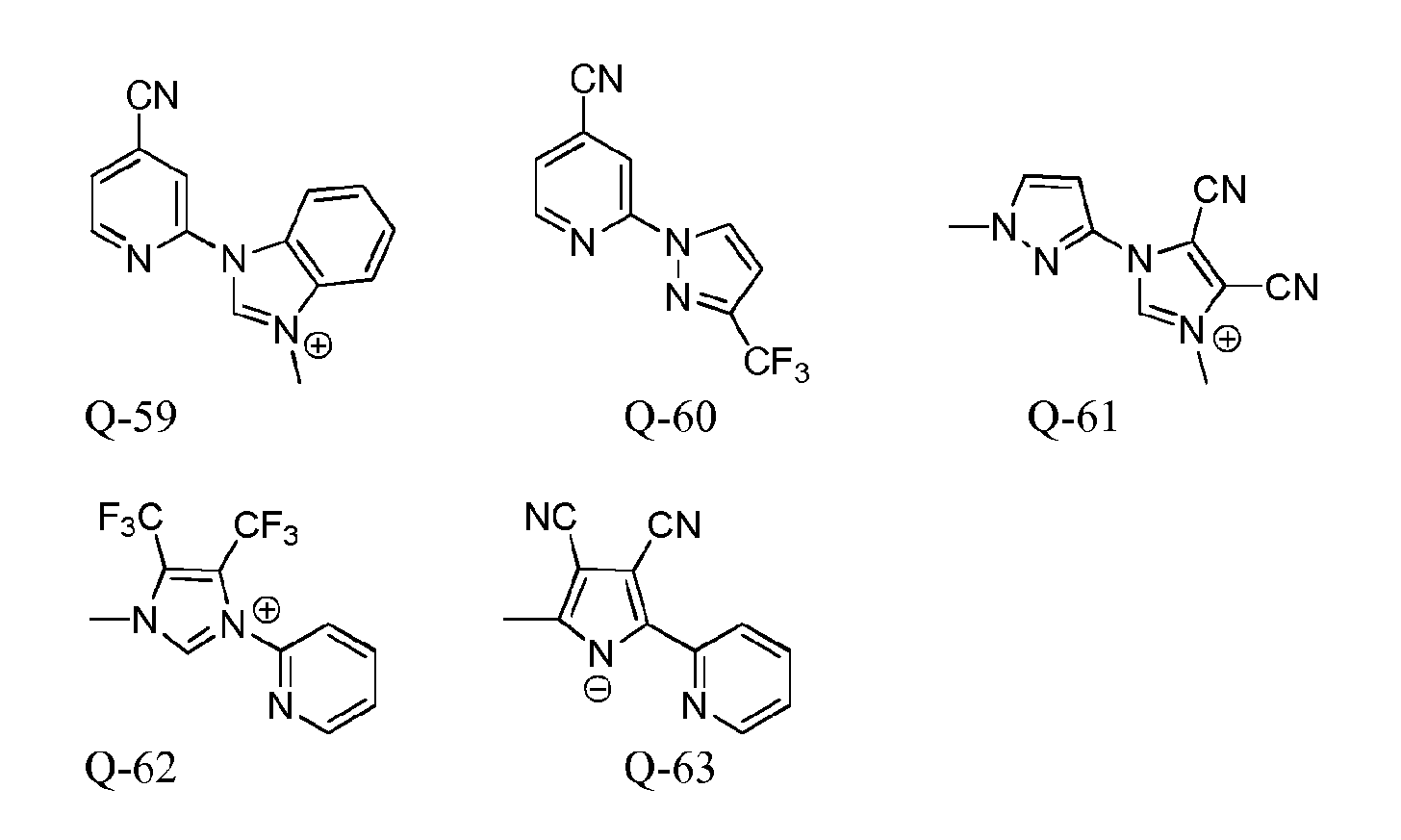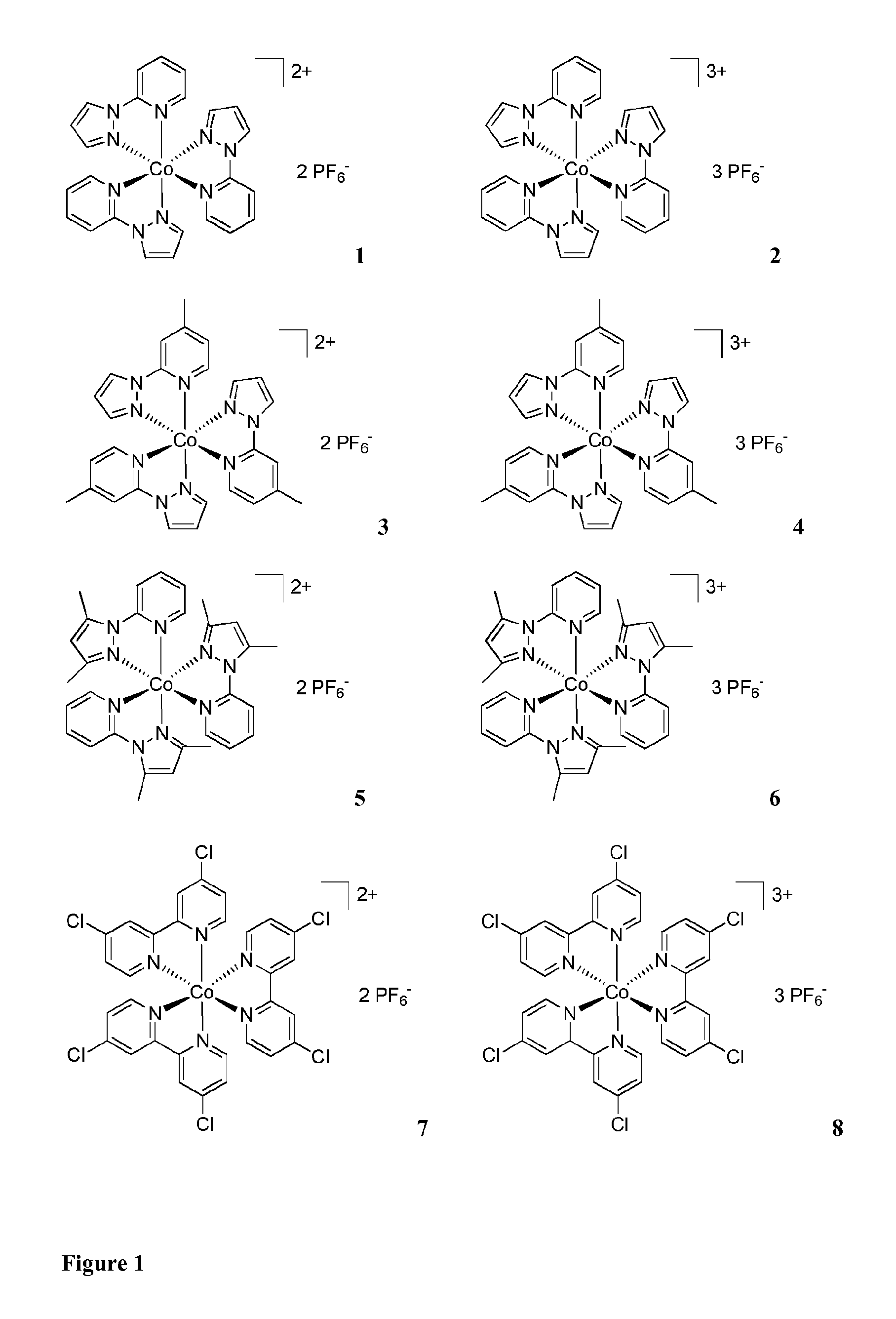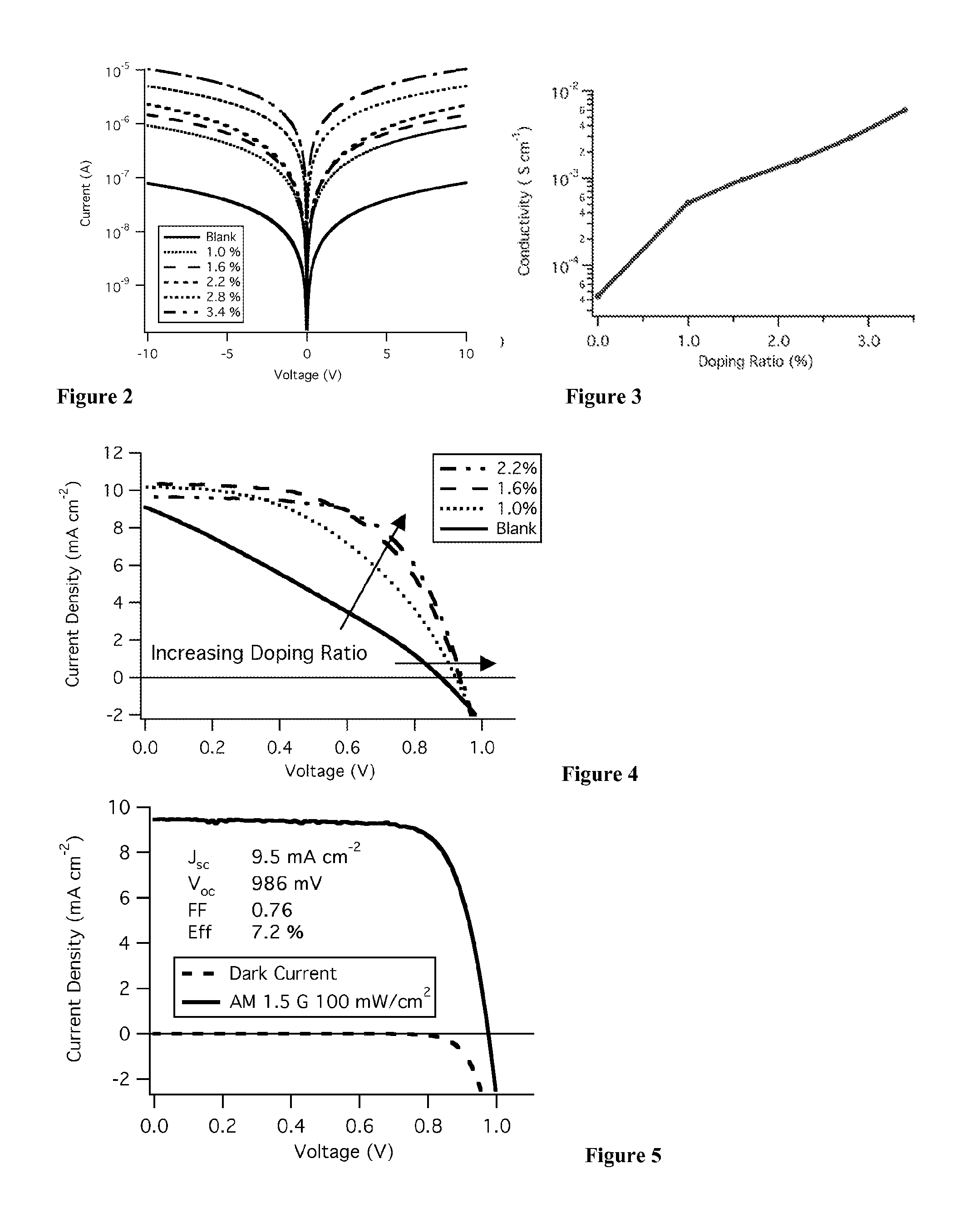Metal complexes for use as dopants and other uses
- Summary
- Abstract
- Description
- Claims
- Application Information
AI Technical Summary
Benefits of technology
Problems solved by technology
Method used
Image
Examples
example 1
Synthesis of Different Pyridine-Pyrazole Ligands
[0222]2-(1H-pyrazol-1-yl)pyridine (also 1-(pyridine-2-yl)-1H-pyrazol, Py-Pz)) (see ligands of complex 1 in FIG. 1) was obtained as disclosed in Elguero J. et al., Chemische Berichte, 1996, 129, pages 589-594.
[0223]4-Methyl-2-(1H-pyrazol-1-yl)pyridine (MePy-Pz). 0.95 g (14.0 mmol, 2 eq) of Pyrazole was dissolved in 20 mL of DMSO at room temperature and 1.57 g (14.0 mmol, 2 eq) of KOtBu was added. The mixture was heated to 40° C. for 20 min. and then 0.78 g (7.0 mmol, 1 eq) of 2-Fluoro-4-picoline (2-Fluoro-4-methyl-pyridine) was added and the mixture was heated to 110° C. overnight. After cooling to room temperature the mixture was diluted with water and extracted with Et2O (3×). The combined colourless organic layers were washed with water, dried over MgSO4 and concentrated. The yellow oil was purified by column chromatography using CH2Cl2 / EtOAc=6 / 1 as solvent mixture. The pure product was obtained as colourless liquid in 99% yield (1.1...
example 2
Synthesis of [Co(Py-Pz)3](PF6)2 (CoIII Complex 1)
[0226]225 mg (1.55 mmol, 3.1 eq) of pyridine-pyrazole (Py-Pz) ligand (Example 1) were dissolved in 20 mL of MeOH and then 119 mg (0.5 mmol, 1 eq) of CoCl2*6H2O were added as a solid. The mixture was heated to reflux for 2 h. After cooling to r. t. excess of KPF6 dissolved in MeOH was added to the mixture. The mixture was stored at 3° C. for precipitation. After 3 h the product was collected on a sintered glass frit and dried in vacuo. The pure product (FIG. 1, compound 1) was obtained as orange crystals. Yield: 246 mg (0.33 mmol, 66%). HRMS (ESI-TOF) m / z (%): calcd. for C24H21CoN9. 247.0626. found 247.0635 (100) [(M-2 PF6)2+].
example 3
Synthesis of [Co(Py-Pz)3](PF6)3 (CoIII Complex 2)
[0227]218 mg (1.5 mmol, 3.0 eq) of pyridine-pyrazole ligand were dissolved in 10 mL of water and heated to 75° C. until complete solution occurred. Then 119 mg (0.5 mmol, 1 eq) of CoCl2*6H2O were added to the colourless solution. To the pink solution H2O2 (1 mL, 30%) and HCl (1 mL, 25%) were added to oxidize the cobalt. After 10 min. 460 mg (2.5 mmol, 5 eq) of KPF6 dissolved in 10 mL of hot water were added drop wise to the mixture. Precipitation occurred and the mixture was allowed to cool to room temperature. The product was collected on a sintered glass frit and dried in vacuo. The pure fac-Isomer (FIG. 1, complex 2) was obtained as orange solid. Yield: 259 mg (0.28 mmol, 56%). 1H NMR (400 MHz, acetone-D6): δ 9.56-9.53 (m, 3H, ArH), 8.73-8.64 (m, 6H, ArH), 8.01-7.81 (m, 9H, ArH), 7.27-7.23 (m, 3H, ArH) ppm.
PUM
 Login to View More
Login to View More Abstract
Description
Claims
Application Information
 Login to View More
Login to View More - R&D
- Intellectual Property
- Life Sciences
- Materials
- Tech Scout
- Unparalleled Data Quality
- Higher Quality Content
- 60% Fewer Hallucinations
Browse by: Latest US Patents, China's latest patents, Technical Efficacy Thesaurus, Application Domain, Technology Topic, Popular Technical Reports.
© 2025 PatSnap. All rights reserved.Legal|Privacy policy|Modern Slavery Act Transparency Statement|Sitemap|About US| Contact US: help@patsnap.com



